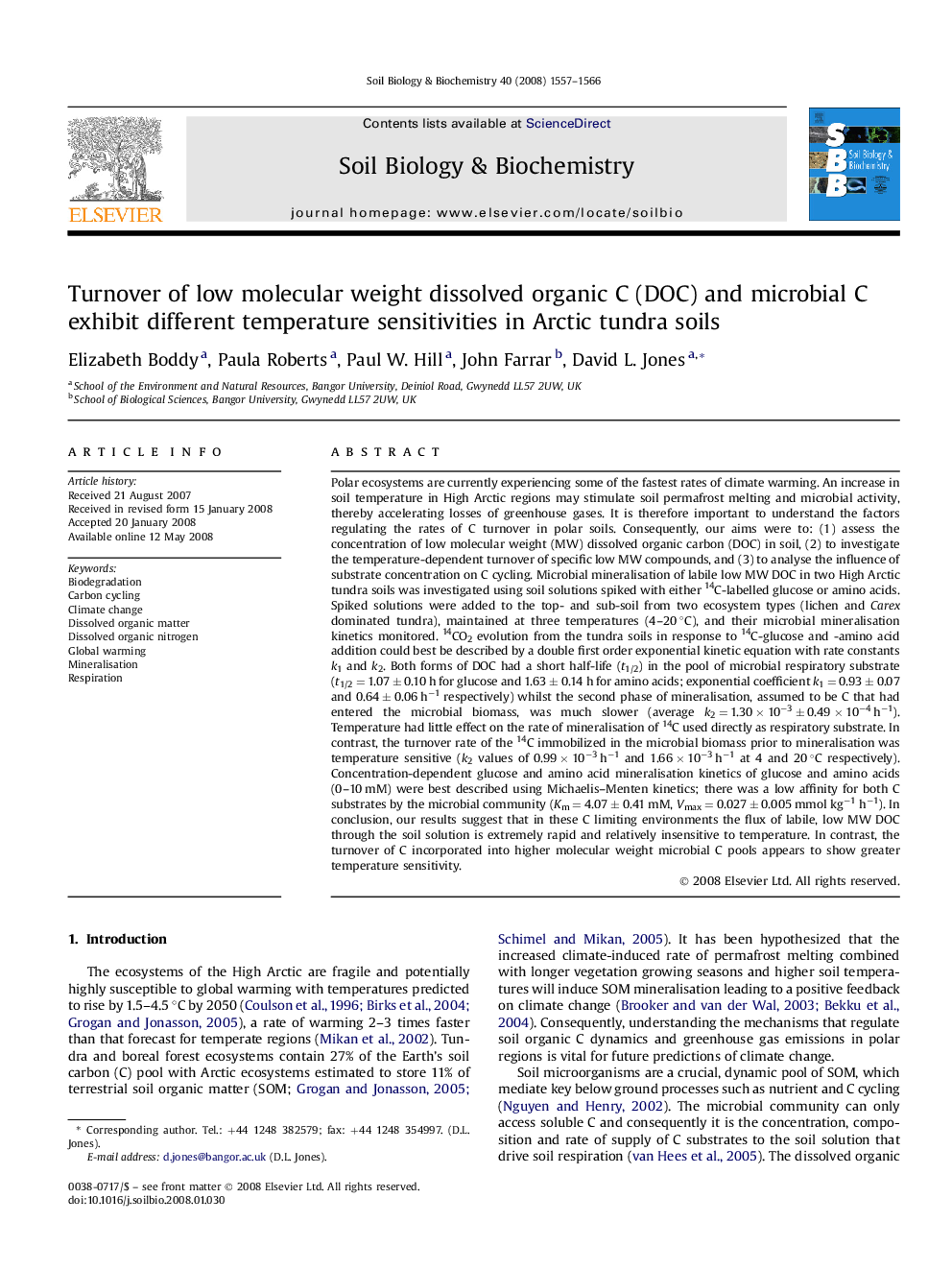| Article ID | Journal | Published Year | Pages | File Type |
|---|---|---|---|---|
| 2025806 | Soil Biology and Biochemistry | 2008 | 10 Pages |
Polar ecosystems are currently experiencing some of the fastest rates of climate warming. An increase in soil temperature in High Arctic regions may stimulate soil permafrost melting and microbial activity, thereby accelerating losses of greenhouse gases. It is therefore important to understand the factors regulating the rates of C turnover in polar soils. Consequently, our aims were to: (1) assess the concentration of low molecular weight (MW) dissolved organic carbon (DOC) in soil, (2) to investigate the temperature-dependent turnover of specific low MW compounds, and (3) to analyse the influence of substrate concentration on C cycling. Microbial mineralisation of labile low MW DOC in two High Arctic tundra soils was investigated using soil solutions spiked with either 14C-labelled glucose or amino acids. Spiked solutions were added to the top- and sub-soil from two ecosystem types (lichen and Carex dominated tundra), maintained at three temperatures (4–20 °C), and their microbial mineralisation kinetics monitored. 14CO2 evolution from the tundra soils in response to 14C-glucose and -amino acid addition could best be described by a double first order exponential kinetic equation with rate constants k1 and k2. Both forms of DOC had a short half-life (t1/2) in the pool of microbial respiratory substrate (t1/2 = 1.07 ± 0.10 h for glucose and 1.63 ± 0.14 h for amino acids; exponential coefficient k1 = 0.93 ± 0.07 and 0.64 ± 0.06 h−1 respectively) whilst the second phase of mineralisation, assumed to be C that had entered the microbial biomass, was much slower (average k2 = 1.30 × 10−3 ± 0.49 × 10−4 h−1). Temperature had little effect on the rate of mineralisation of 14C used directly as respiratory substrate. In contrast, the turnover rate of the 14C immobilized in the microbial biomass prior to mineralisation was temperature sensitive (k2 values of 0.99 × 10−3 h−1 and 1.66 × 10−3 h−1 at 4 and 20 °C respectively). Concentration-dependent glucose and amino acid mineralisation kinetics of glucose and amino acids (0–10 mM) were best described using Michaelis–Menten kinetics; there was a low affinity for both C substrates by the microbial community (Km = 4.07 ± 0.41 mM, Vmax = 0.027 ± 0.005 mmol kg−1 h−1). In conclusion, our results suggest that in these C limiting environments the flux of labile, low MW DOC through the soil solution is extremely rapid and relatively insensitive to temperature. In contrast, the turnover of C incorporated into higher molecular weight microbial C pools appears to show greater temperature sensitivity.
